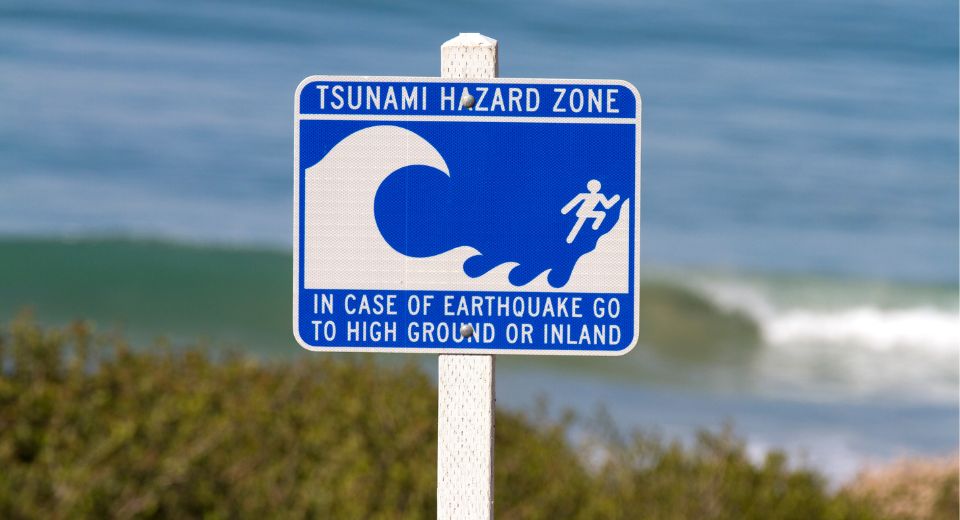
Author: Gale Holmes, Manager
March is National Tsunami Preparedness Month. Tsunamis, also known as seismic sea waves, are a series of enormous waves created by an underwater disturbance such as an earthquake, landslide, or volcanic eruption. A tsunami can move hundreds of miles per hour in the open ocean and smash into land with waves as high as 100 feet or more.
All tsunamis are potentially dangerous, though they may not damage every coastline they strike. Drowning is the most common cause of death associated with a tsunami. Other hazards include flooding, contamination of drinking water and fires from gas lines or ruptured tanks.
During a Tsunami
- Follow evacuation orders issued by authorities and evacuate immediately. Take your animals with you! If it’s not safe for you, it’s not safe for them.
- Move inland to higher ground immediately. Pick areas 100 feet above sea level or go as far as 2 miles inland, away from the coastline. If you cannot get this high or far, go as high or far as you can. Every foot inland or upward may make a difference.
- Never go to the beach or coastline to watch a tsunami come in. If you can see the wave you are too close, move away immediately.
- Remember to help your neighbors who may require special assistance – infants, elderly people, etc.
- Drop, cover and hold on. You should first protect yourself if there is an earthquake. When the shaking stops, gather members of your household and move quickly to higher ground away from the coast. A tsunami can come within minutes.
- Avoid downed power lines and stay away from buildings and bridges from which heavy objects might fall during an aftershock.
Tsunami Preparedness
- Make a disaster supply kit: Click here for a good supply checklist by the Red Cross.
- Family emergency plan: Have an escape plan and routes for your home and establish a place to meet in the event of an emergency.
- Talk to everyone in your immediate family about what to do if a tsunami (or any natural disaster) occurs. Create and practice an evacuation plan for your family because familiarity may save you or your family members life.
After a Tsunami
- Continue using a NOAA Weather Radio or tuning to a Coast Guard station or a local radio or television station for the latest updates.
- Return home only after local officials tell you it is safe. A tsunami is a series of waves that may continue for hours. Do not assume that after one wave the danger is over. The next wave may be larger than the first one.
- Check yourself for injuries and get first aid as needed before helping injured or trapped persons.
- If someone needs to be rescued, call professionals with the right equipment to help. Many people have been killed or injured trying to rescue others.
- Help people who require special assistance—infants, elderly people, those without transportation, people with disabilities and large families who may need additional help in an emergency situation.
- Avoid disaster areas. Your presence might interfere with emergency response operations and put you at further risk from the residual effects of floods.
- Use the telephone only for emergency calls.
- Stay out of any building that has water around it. Tsunami water can cause floors to crack or walls to collapse.
- Use caution when re-entering buildings or homes. Tsunami-driven flood water may have damaged buildings where you least expect it. Carefully watch every step you take.
- To avoid injury, wear protective clothing and be cautious when cleaning up.
- Watch animals closely and keep them under your direct control.
Practicing emergency drills regularly can go a long way in helping you and your family be prepared for a natural disaster such as a tsunami. Be ready!
The information provided is for general interest only and should not be misconstrued as a diagnosis, prognosis, or treatment recommendation. This information does not in any way constitute the practice of medicine, or any other health care profession. Readers are directed to consult their health care provider regarding their specific health situation. Marque Medical is not liable for any action taken by a reader based upon this information.

